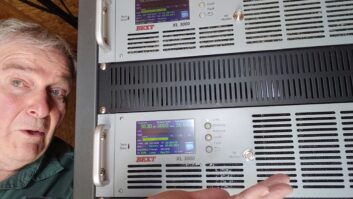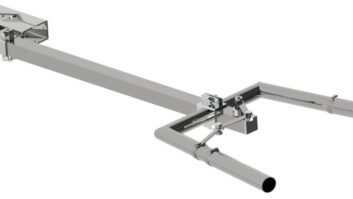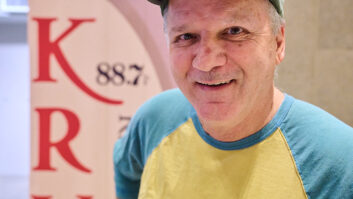REYNOSA, Mexico In the spring of 2008 I purchased a Bext FB series radio broadcast transmitter for 90.9 XHRYA, an FM station in Reynosa, Mexico, just across the Texas–Mexico border.
The transmitter was installed in May with a simple and straightforward installation and has been working flawlessly since.
The FB Series from Bext is a relatively new, remarkably compact series of FM solid-state transmitters, available in power levels of 2 kW, 3.5 kW and now 5 kW.
Space is always a premium at transmitter sites, so the compact overall size was a factor in our choice. As a side benefit, the small size and lightweight made it easy to transport and install the unit.
The cabinet size for the Bext FB series is the same for all power levels, consisting of a rack-mountable stainless-steel enclosure measuring only four rack spaces in height (just seven inches!) for the RF amplifier section. A slim single-space Bext Lex series exciter is used to drive the amplifier model we purchased, although now Bext has a newer, even more space-saving version, in which the exciter is built into the same 4RU enclosure of the amplifier itself.

For our application, we selected the model FB 2000, which produces 2 kW of power. The RF output connection is a standard 7/8-inch EIA flange and the low-pass/harmonic filter is built in. The amplifier is completely solid-state and broadband, with a step-by-step, menu-driven LCD display on the front panel.
From the LCD screen on the front, users can read everything from RF power to individual status of each internal MOSFET and each power supply section, with event history, overall electrical efficiency and many other parameters.
Additional front-panel LEDs report basic functions and alarms, if any. On the front there is also a BNC connector for RF monitoring purposes.
I liked the lockout function from the front panel. After setting the parameters, the user can lock the unit so that unauthorized persons will not be able to access the menu.
I also liked the stainless steel used for the construction, which feels solid and keeps looking as sharp as it did on the day we installed it.
The unit is cleverly protected from excess reflected power, excess temperature and various overloads by means of gradual RF power foldback. Should the faulty condition go away, output power automatically goes back to the level to which it was originally set.
Internally, the unit is modular, with multiple RF modules and power supply sections, offering convenient redundancy and ease of module replacement whenever necessary. Because of this modular architecture, the unit will keep broadcasting, albeit at reduced power, in the event of a failure of either one RF module or one power supply section.
The exciter section is frequency agile and just like the amplifier section is easy to operate through a menu-driven LCD display. The unit can be remotely controlled by standard analog contacts or by PC through an instant hyperterminal/TTY-ANSI communication that requires no software loading.
The electrical efficiency of this transmitter is very good, exceeding a remarkable 70 percent overall, which explains why the unit produces almost no heat.
This transmitter has run continuously without a single hiccup ever since we installed it and we have been very happy with it. We have since chosen Bext once again when the need for more broadcast equipment presented itself.
For information, contact Bext at (888) 239-8462 or visitwww.bext.com.












